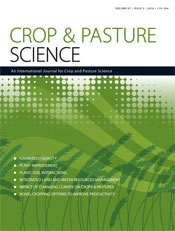CP15276Frost-tolerance genes Fr-A2 and Fr-B2 in Australian wheat and their effects on days to heading and grain yield in lower rainfall environments in southern Australia
FROST RESISTANCE 2 (FR2) and VERNALIZATION 1 (VRN1) genes were known to effect resistance to frost during vegetative growth in wheat. We found that the combination of alleles, or versions, of FR2 and VRN1genes in winter cultivars that could survive severe winters was also present in an Afghan landrace with known better resistance to frost during reproductive development, but not in modern Australian cultivars. FR2 and VRN1genes affected days to heading and grain yield in southern Australia.




